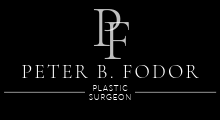Face and Neck Lift Los Angeles | Las Vegas
Be Your Best with a Face & Neck Lift by Plastic Surgeon Dr. Peter B. Fodor
Neck Lift & Facelift by Los Angeles Plastic Surgeon in Beverly Hills & Las Vegas
A facelift is a cosmetic surgery procedure that improves the appearance of the face and neck by reducing the signs of aging. This includes reducing loose, sagging skin, wrinkles, and folds.
As signs of aging begin to appear, the disparity between people’s mental picture of themselves and the image in the mirror can be pronounced, even disturbing. The face lift, or rhytidectomy, was among the earliest aesthetic procedures to gain widespread popularity. A face lift affects the lower two-thirds of the face and the neck; it is an indispensable component of facial rejuvenation and can seem to subtract years from a person’s appearance. Yet, additional procedures are commonly necessary, such as treatment of the forehead and eyelid areas, to achieve optimal rejuvenation of the face.
The face lift can remove excess skin, tighten muscles, ad reposition underlying tissues to reduce or eliminate some of the predominant signs of an aged appearance such as sagging, wrinkling, jowls, and excess fat while restoring a youthful, revitalized look.
Surgery of the lower face and neck can restore a sharper definition to the jawline, repositioning tissues, and trimming excess skin and in conjunction with fat suctioning can eliminate a double chin. It can also correct or improve vertical bands on either side of the beck formed by separation of a muscle called the platysma.

Face and Neck Lift Specifics:
- Length of Surgery – two to four hours.
- Anesthesia – Local anesthesia with intravenous sedation. On the cutting edge and preferred by Dr. Fodor is TIVA, which is a combination of the two. It diminishes bleeding and post-operative nausea.
- Recovery – Initial mild to moderate discomfort; up and about within one to two days; wash hair in two days; swelling and bruising mostly gone in two weeks; back to work with makeup in two weeks; full effect, one to four months.
- Scars – Inconspicuous scarring, mostly concealed in the hair or in natural facial creases; scar behind ear may be visible to your hairdresser.
The Different Types of Face and Neck Lift:
- Skin Only Face and Neck Lift – Although the number of skin-only face lifts has declined considerably since the introduction of the SMAS technique in the mid 1970’s, there are some patients that may qualify for this method for effective results.
- SMAS Face Lift – The SMAS (Superficial Musculo-Aponeurotic System) face lift is the most common face lift performed and addresses not only the superficial top layer of skin but also the deeper tissue layer. In the face, this deeper layer is a sheet of muscle and fibrous connective tissue. A broad muscle, called the platysma, comprises the deeper layer in the neck area. The SMAS face lift repositions and tightens the underlying tissue layers, which tend to grow lax and sag with aging. The skin is then re-draped over this rejuvenated framework. The procedure generally produces a natural looking result that is long lasting.
- Short Scar Face & Neck Lift – A short scar facelift is a minimally invasive face rejuvenating procedure that is performed through smaller incisions than a traditional facelift. This results in less scarring and a shorter recovery time while still tightening the underlying muscle (SMAS) layer and delivering a result that will last.
- Endoscopic Face and Neck Lift – The endoscope, a pencil-shaped probe containing a tiny camera, transmits video images of the body’s internal structures to a video monitor in the operating room. The endoscope can minimize the invasiveness of the procedure and reduce the size of the incisions. The endoscopic face lift may be an option for patients without a significant amount of excess skin. The best candidates for the endoscopic face and neck lift are those with minimal excess skin but have developed sagging cheeks or folds around the mouth.
- Mid Face Lift – While a face lift will improve the lower third of the face, a midface lift, also called a cheek lift, addresses problems in the middle third of the face. These include accentuated nasolabial folds (creases running from the base of the nose to the sides of the mouth), a hollow appearance between the upper cheeks and lower eyelids, and fatty bags in the upper cheek area just below the lower eyelids.
Benefits of a Face & Neck Lift
A facelift can provide a number of benefits, including:
- A younger, more refreshed appearance
- Reduced wrinkles and folds
- Improved skin elasticity
- More contoured facial features
- Increased self-confidence
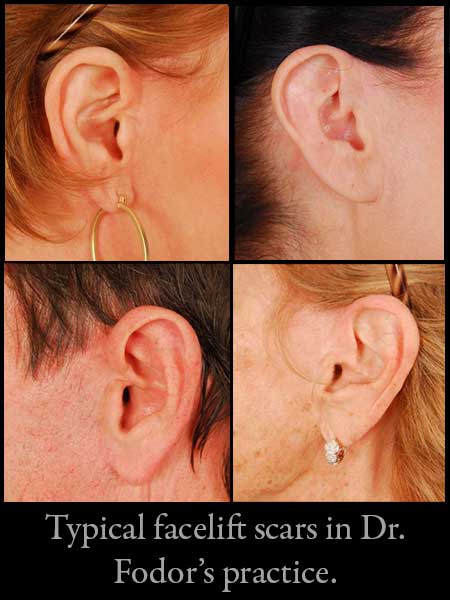
Who is a Good Candidate for a Face and Neck Lift?
A facelift is a good option for patients who:
- Have loose, sagging skin on the face and neck
- Are unhappy with the appearance of their face and neck
- Are in good overall health and have realistic expectations
What is a Short Scar Facelift?
A short scar facelift is a minimally invasive face rejuvenating procedure that is performed through smaller incisions than a traditional facelift. This results in less scarring and a shorter recovery time while still tightening the underlying muscle (SMAS) layer and delivering a result that will last.
Benefits of Short Scar Face Lift Surgery
Short scar face and neck lift surgery can provide a number of benefits, including:
- Reduced scarring
- Shorter recovery time
- Natural-looking results
- Enhanced appearance and self-confidence
About the Near Facelift Procedure
Significant results in minimally invasive procedures. Many patients seek out Dr. Fodor to perform full facelift cosmetic surgery. After thorough patient evaluation based on patients individual goals, medical history, and expectations, alternative and less invasive procedures may be recommended.
The near facelift procedure is a combination of less invasive procedures and treatments aimed at full facial rejuvenation and smoother, more youthful appearance. Dr. Fodor developed the concept of a near face and neck lift after listening to his patients and creating plans to offer the results and improvements they are looking to achieve without the recovery time and invasive surgery that goes along with a full face and neck lift.
A “Near Face Lift” may include any number of procedures such as eyelid rejuvenation, cheek and chin implants, liposuction of the neck, buccal fat pad reduction, nasal reshaping but not a Face Lift per se, performed under the same surgical session. Properly chosen and executed, the collective result in improvement in the facial aesthetics is far in excess of the sum of its parts. A near facelift can delay the need for a full facelift for as long as a decade.
Advanced medical technology combined with the latest surgical techniques allows for less invasive techniques to provide drastic results, and when combined can offer significant rejuvenation that gives the illusion of a facelift.
Face & Neck Lift Before After Photos
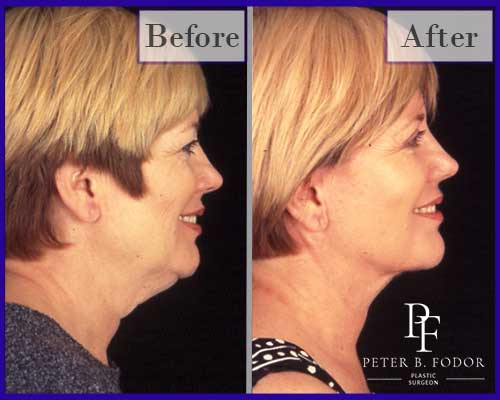
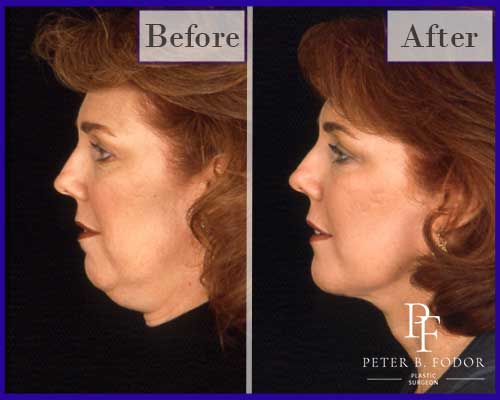
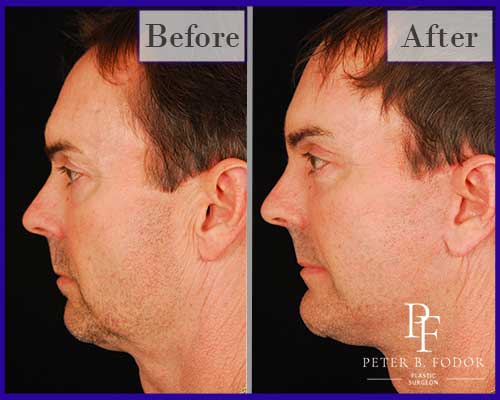
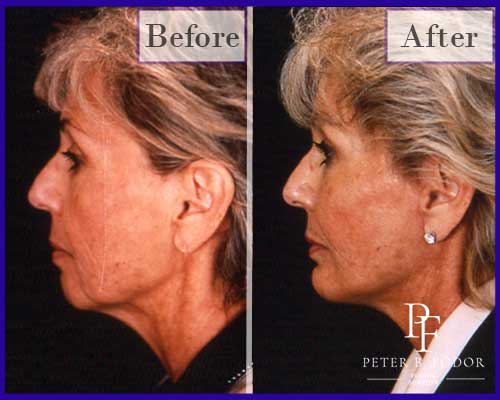
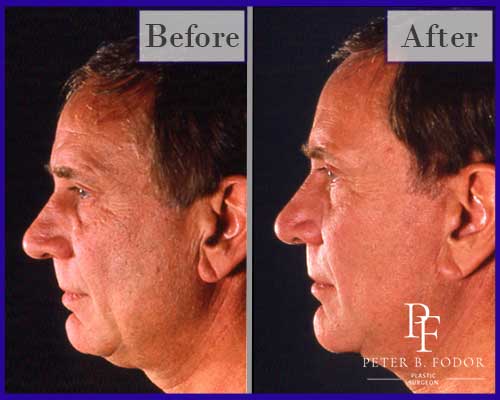
Your Favorite Version of You Begins Here
Call today to schedule your confidential consultation with Dr. Peter Fodor to discuss your cosmetic goals.
